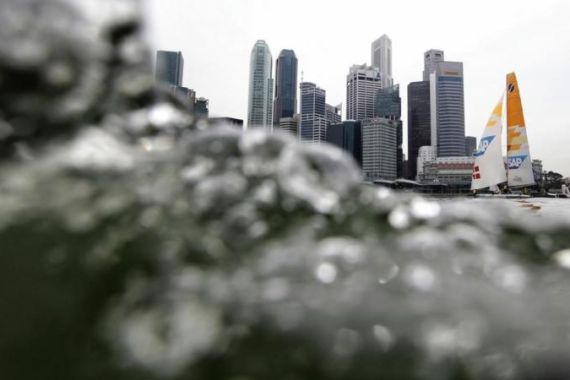Sailing goes extreme in Olympic battle
After shock dismissal of wrestling from Olympic program, sailing is looking at ways of becoming more spectator friendly.

Stadium racing, used in the growing Extreme Sailing series, could well be the future of Olympic sailing, thrusting the sport from the periphery to the centre of host cities, says director Patrice Clerc.
Extreme Sailing, in its seventh year, features five-man teams racing in lightweight 40-foot multihull vessels that can reach speeds of 46 MPH (74 KPH) in the centre of eight cities, with the aim of growing the sport by taking it to the public.
While Sailing at the Beijing and London Olympics was located a far cry from the main venues, Extreme Sailing is held on shores, rivers and bays, encouraging greater spectator interest with a format where the course can change at short notice.
Having watched Sailing giants Alinghi test the waters at Marina Bay in the heart of the citystate’s central business district in front of a growing audience of spectators, Clerc said he could foresee the format being granted Olympic approval.
“I could imagine that… yes why not?,” said the chairman of the organising committee, OC Sport.
“We have a stamp as an official circuit of the international federation. We have very good contact with them and they have realised that this form of competition for sailing was probably important to consider for the future.
“It will not come from us, we will not try and impose our views, it is a good question to raise with the International Federation.”
The series began in Oman last month and will head to China’s Olympic Sailing city Qingdao in May with further ‘Acts’ in Istanbul, Porto, Cardiff and Nice before finishing in Rio de Janiero, the 2016 Olympic hosts.
Evolution
The series’ Olympic feel is also boosted by its glittering cast of medallists.
Austria’s Roman Hagara won two Olympic golds in the Tornado class and leads the Red Bull Sailing team, while Team Korea is skippered by 22-year-old New Zealander Peter Burling, who won silver in the 49er class in London.
While Singapore’s small bay, at the centre of the city state’s iconic Formula One night race, will provide little room for manoeuvre among the eight teams, it will feel as big as an ocean in comparison to the narrow River Douro in Portugal.
|
“It is definitely one of the ways sailing should go, closer to the public and show how tough racing is” Austria’s Roman Hagara |
Despite the trickery of the Porto leg, Hagara believes the venue was ideal to help the sport grow, as the 66,000 fans that turned up to watch in 2012 demonstrated.
“It is definitely one of the ways sailing should go, closer to the public and show how tough racing is,” said the softly spoken Austrian.
“It is a little bit like what is happening with Olympic sailing with the final race as close to shore with the public, I think that is the future of sailing. That is what ISAF (International Sailing Federation) are doing, trying to go this way.”
While Sailing has featured in every Olympics since 1908, the shock ditching of Wrestling from the Games programme has left many established sports looking over their shoulders.
Burling said the evolution of the sport, with concepts such as Extreme Sailing, to make it more entertaining for the public would preserve its place.
“It is always something that is a possibility and one of the things you can’t really control,” the Kiwi said when asked if he was worried Sailing may get scrapped.
“So you just try and make sailing as spectator-friendly and as nice as you can.”